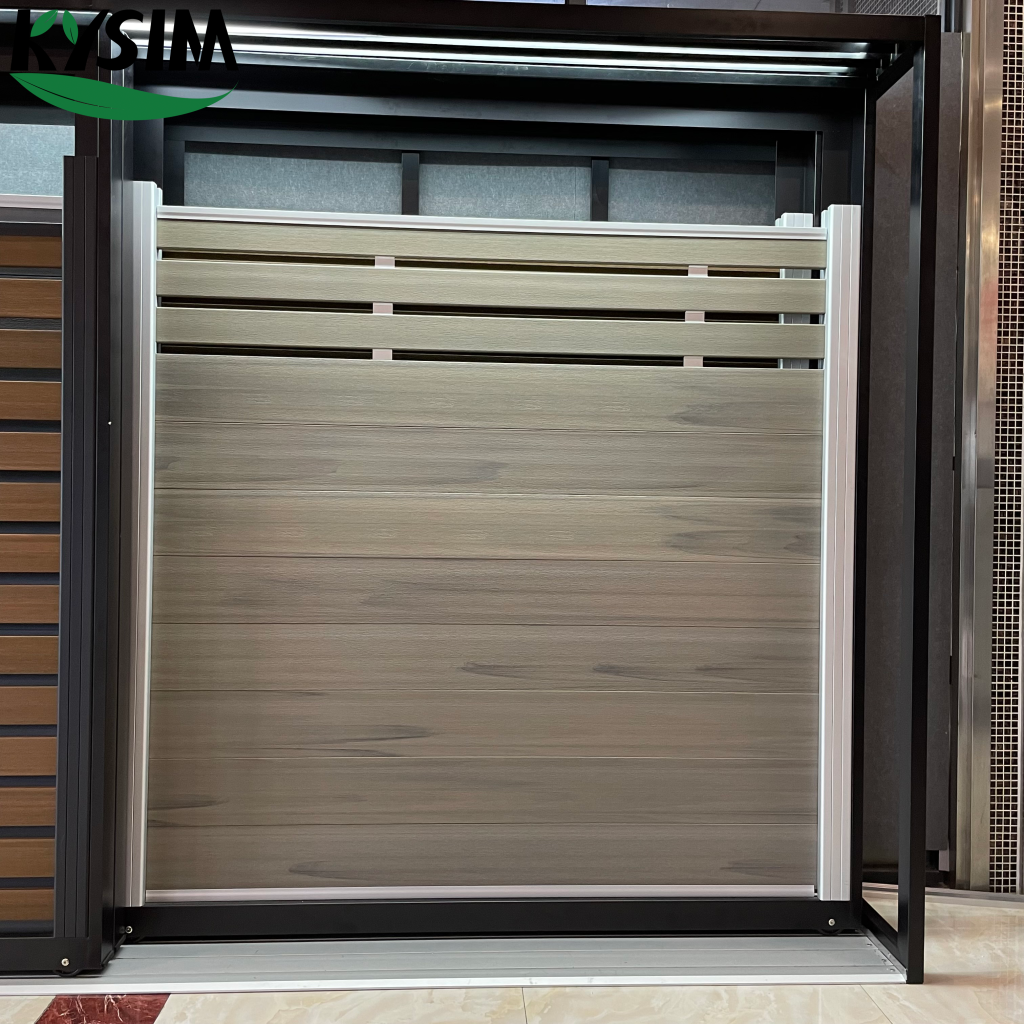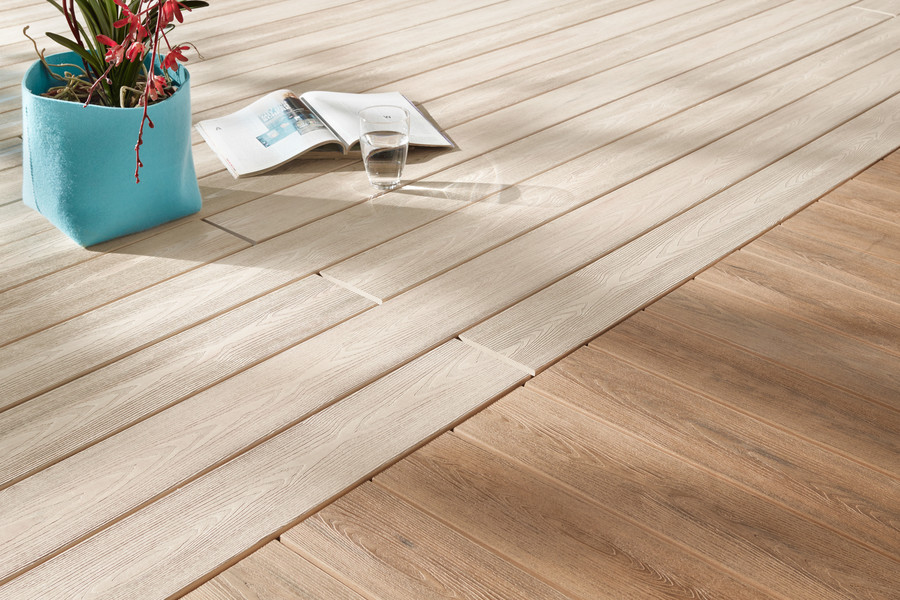
Revolutionize Your Outdoor Living with Kysim’s Stunning Composite Wood Products
May 8, 2023
WPC Dielen Terrassendielen
May 27, 2023Installing WPC (Wood Plastic Composite) decking offers durability and low maintenance, but improper techniques can lead to structural and aesthetic problems. This article analyzes critical installation challenges and their solutions, based on industry guidelines and expert recommendations.
1. Improper Joist Spacing and Support
Issue: Incorrect joist spacing (>35 cm) or insufficient support causes sagging, warping, and premature wear. Hollow-profile decking is particularly vulnerable to uneven loads35.
Solutions:
- Follow manufacturer guidelines: Maintain joist spacing ≤35 cm for standard boards. Reduce spacing to ≤25 cm for hollow profiles or high-traffic areas58.
- Use double joists at board joints to prevent separation13.
- Secure joists to a level, stable base (e.g., concrete) using stainless steel screws or expansion bolts. For uneven ground, adjust with shims or leveling materials810.
2. Neglecting Expansion Gaps
Issue: Thermal expansion and contraction can cause buckling, warping, or board separation if gaps are insufficient1213.
Solutions:
- Side gaps: Leave ≥6 mm between boards and adjacent structures (e.g., walls)510.
- End gaps: Calculate using the formula:
△L = 0.00009 × (T_max − T_install) × Board Length
For example, a 2-meter board installed at 10°C in a region with a max temperature of 40°C requires a 5.4 mm gap513. - Use spacer tools or clip systems to ensure consistent gaps during installation10.
3. Faulty Fastening Techniques
Issue: Over-tightened screws, improper pre-drilling, or using nails instead of screws can split boards or restrict natural movement38.
Solutions:
- Pre-drill holes (≤3/4 of screw diameter) to prevent splitting513.
- Use stainless steel screws (20–25 mm length) spaced 12–16 inches apart along joists810.
- Avoid face screwing; opt for hidden clip systems or side-fixing methods to minimize surface damage1013.
4. Poor Surface Preparation and Drainage
Issue: Uneven substructures or inadequate slopes lead to water pooling, mold growth, and structural instability112.
Solutions:
- Level the ground with a 1/4-inch slope per foot for drainage13.
- Install root-stop fabric under the substructure to prevent weed growth13.
- For concrete bases, ensure a minimum 8 mm thickness and use under-deck drainage systems in high-rainfall areas812.
5. Misalignment and Warping
Issue: Poorly aligned boards create visual inconsistencies and weaken the deck’s integrity. Warping often results from improper installation or environmental stress212.
Solutions:
- Snap a chalk line as a reference guide before installing the first board5.
- Secure the initial board directly with screws (not clips) to ensure straight alignment310.
- For warped boards, replace damaged sections by removing clips on both sides and installing new boards10.
6. Material Handling and Storage
Issue: Storing WPC decking on uneven surfaces or exposing it to moisture before installation can cause warping13.
Solutions:
- Store boards flat in a dry, ventilated area for 3 days before installation to acclimate13.
- Avoid installing in extreme temperatures (e.g., below freezing)13.
Conclusion
Proper WPC decking installation requires attention to joist spacing, expansion gaps, and drainage. Key takeaways include:
- Follow manufacturer guidelines for spacing and fastening310.
- Calculate thermal expansion gaps based on local climate513.
- Prioritize level substructures and drainage design812.
For complex projects, consult professional installers or engineers to ensure compliance with local building codes813.
References
- Joist spacing and fastening techniques35.
- Expansion gap calculations513.
- Drainage and substructure preparation812.
- Material storage and handling13.

